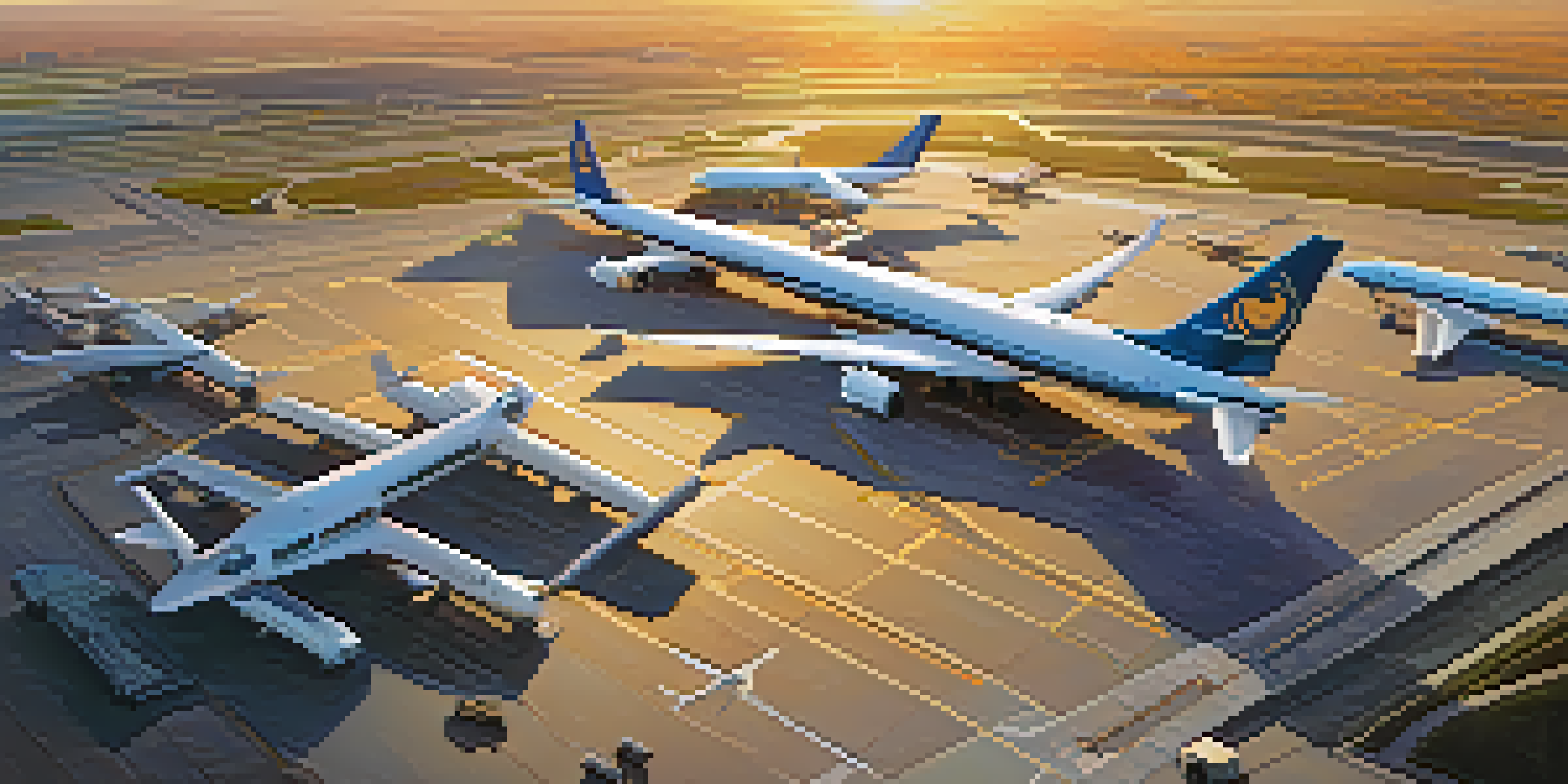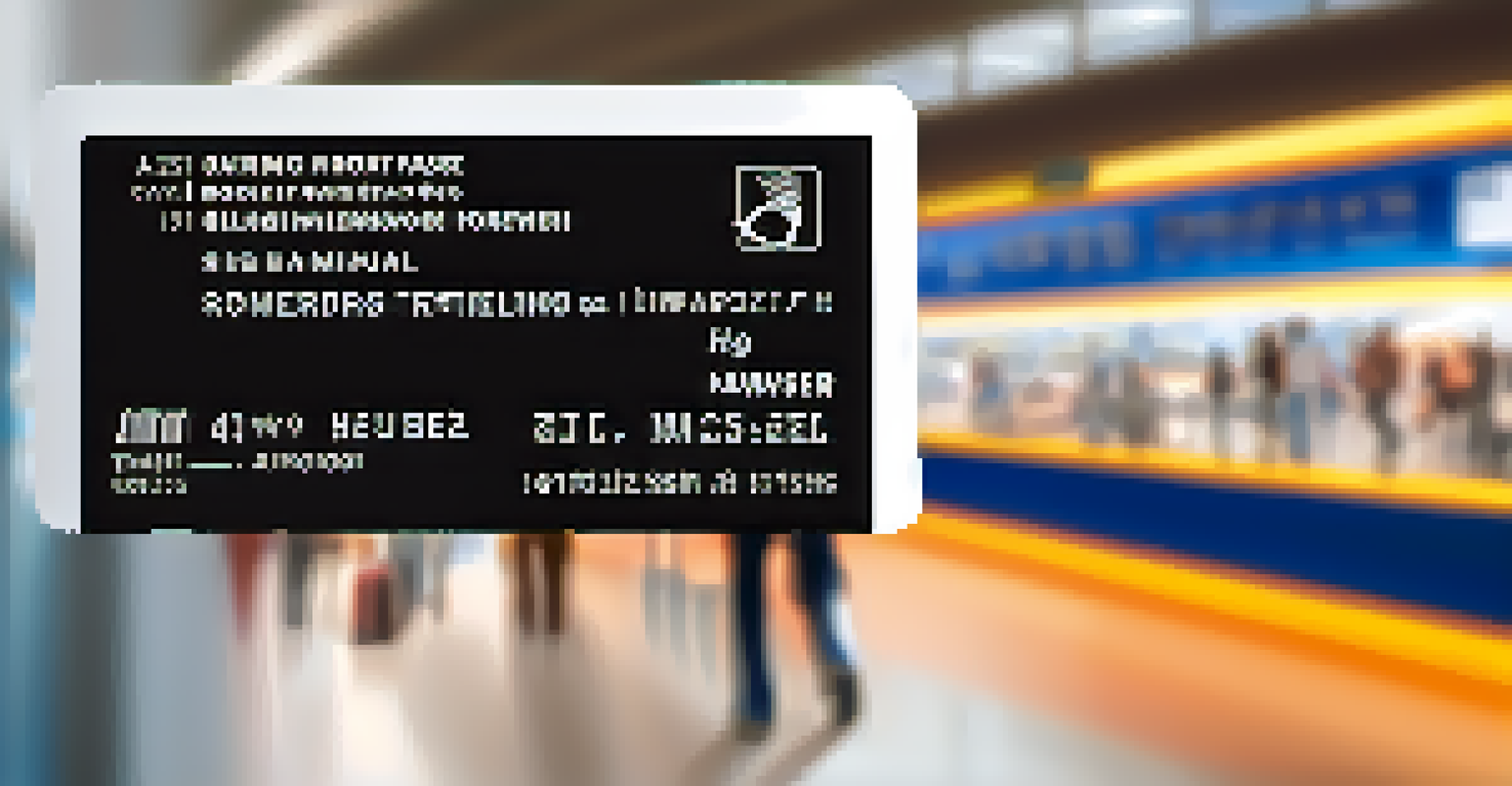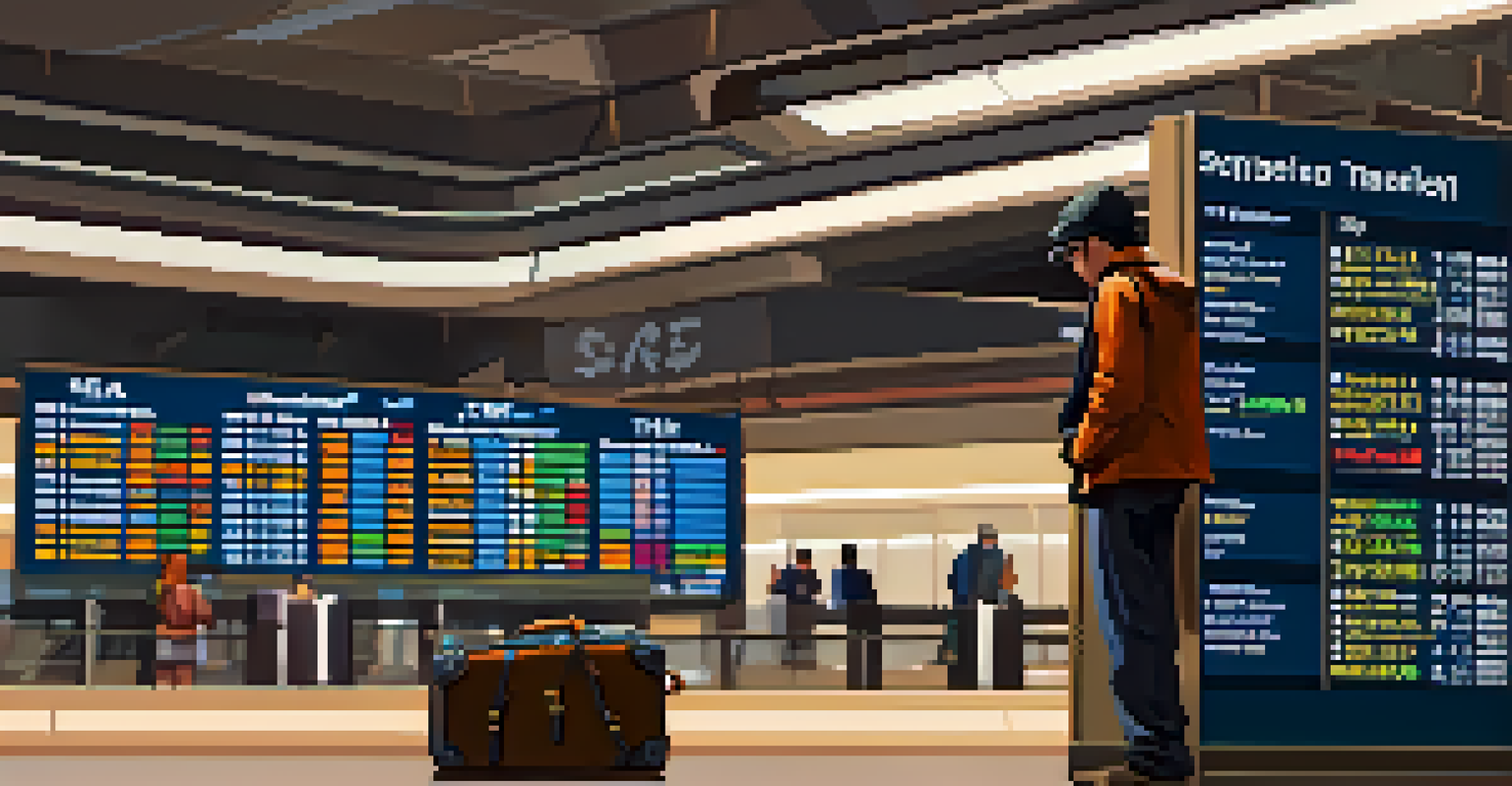Essential Tips for First-Time Flyers Navigating Airports

Understanding Your Flight Itinerary and Boarding Pass
Before heading to the airport, familiarize yourself with your flight itinerary. This includes your departure and arrival times, gate information, and any layovers. Having this knowledge will help you navigate the airport more confidently.
Traveling – it leaves you speechless, then turns you into a storyteller.
Your boarding pass is your ticket to the plane and contains crucial information like your flight number and boarding time. Make sure to double-check the details on your boarding pass before you leave home.
If you're flying with an airline app, you can often check in online and receive a digital boarding pass. This can save you time at the airport and reduce stress on your travel day.
Arriving at the Airport: Timing is Everything
One of the most important tips for first-time flyers is to arrive at the airport early. For domestic flights, aim to arrive at least two hours before your departure, and for international flights, three hours is ideal. This extra time allows you to handle unexpected delays.

Use your early arrival to familiarize yourself with the airport layout. Many airports have maps online, and knowing your way around can make a big difference when it comes to finding your gate or amenities.
Know Your Itinerary and Boarding Pass
Familiarizing yourself with your flight details and having your boarding pass ready can enhance your travel experience.
If you have extra time, consider exploring the shops or restaurants in the airport. This can make your waiting time more enjoyable and help you relax before your flight.
Navigating Security Checks Smoothly
Airport security can seem daunting, but understanding the process can make it easier. Be prepared to show your boarding pass and ID before entering the security line. It’s best to keep these items easily accessible.
The journey of a thousand miles begins with one step.
When you reach the screening area, you'll need to remove your shoes, belt, and any metal items. Place your carry-on items, including your laptop and liquids, in the bins provided. Familiarize yourself with the TSA guidelines to avoid surprises.
After your items are screened, you'll walk through a metal detector. If it beeps, don’t panic! A security officer may ask you to step aside for a quick pat-down or further inspection. Just stay calm, and it will be over before you know it.
Finding Your Gate and Staying Updated
Once you pass through security, your next task is to locate your gate. This information is usually displayed on monitors throughout the terminal. Make sure to check for any updates, as gates can change frequently.
If you're unsure where your gate is, don’t hesitate to ask airport staff for directions. They’re there to help, and a friendly smile can go a long way in easing your nerves.
Arrive Early for Stress-Free Travel
Arriving at the airport well in advance allows you to handle unexpected delays and explore the terminal comfortably.
Keep an eye on the time and listen for announcements regarding your flight. Being aware of boarding times and any potential delays will ensure you’re prepared when it’s time to board.
Packing Tips for First-Time Flyers
Packing efficiently can greatly enhance your travel experience. Start by creating a packing list that includes essentials like your ID, boarding pass, and any medications you may need. This will help you avoid forgetting important items.
Be mindful of the airline's luggage restrictions regarding size and weight. Aim to pack light, and consider using a carry-on bag to avoid checked bag fees and the hassle of baggage claim.
Don't forget to pack a small bag of snacks and entertainment for your flight. Whether it's a book, magazine, or downloaded movies, having something to occupy your time can make the journey much more pleasant.
Understanding In-Flight Etiquette
Onboard, it's important to be considerate of fellow passengers. When you enter the plane, stow your carry-on quickly to allow others to get to their seats. A little courtesy can go a long way in creating a pleasant environment.
Remember to keep your voice down and use headphones if you're listening to music or watching a movie. Not everyone shares the same taste in entertainment, and being mindful of noise levels shows respect for your seatmates.
Practice Good In-Flight Etiquette
Being considerate of fellow passengers and maintaining a calm demeanor can create a more enjoyable flight experience for everyone.
Lastly, be patient during the flight, especially during boarding and deplaning. Everyone's eager to reach their destination, but a bit of patience can make the experience smoother for everyone involved.
Arriving at Your Destination: What to Expect
Once you land, follow the signs to baggage claim if you checked a bag. If you only have a carry-on, you can head straight to the exit. Each airport has its own layout, so it’s helpful to keep an eye out for informational signs.
If you’re taking public transportation or a ride-share service, check the airport’s website for designated pick-up areas. Knowing where to go can save you time and confusion after a long flight.

Finally, take a moment to breathe and enjoy your arrival. Traveling can be overwhelming, but recognizing your accomplishment of navigating the airport can boost your confidence for future flights.